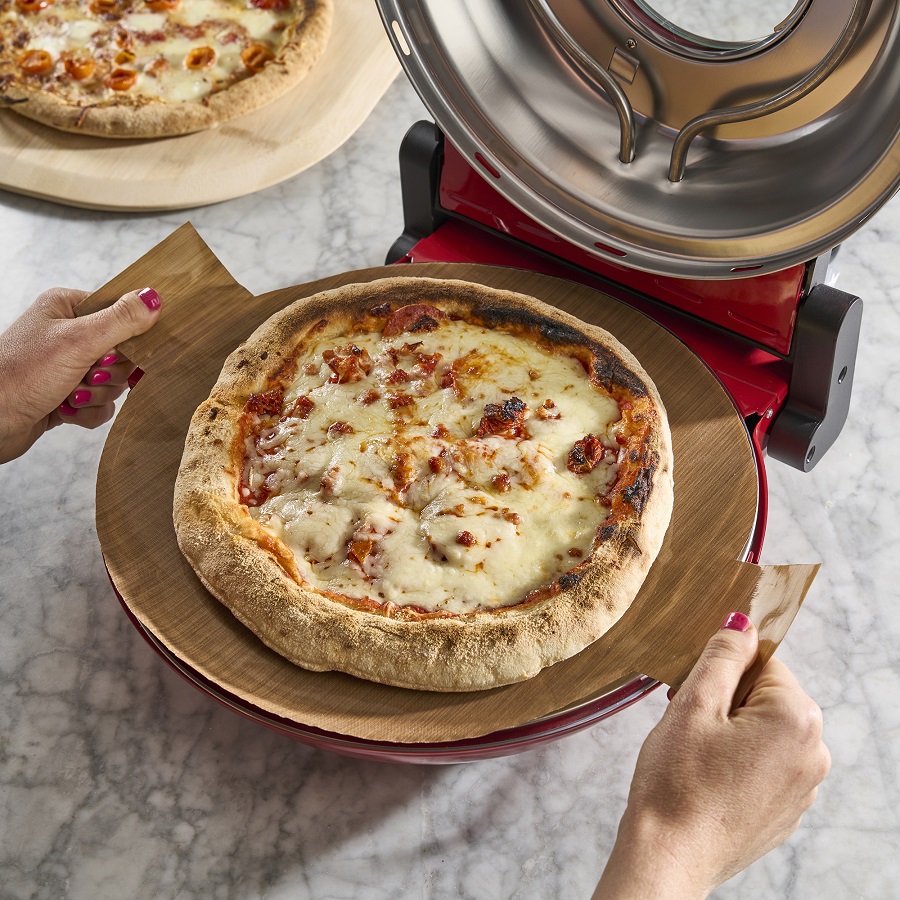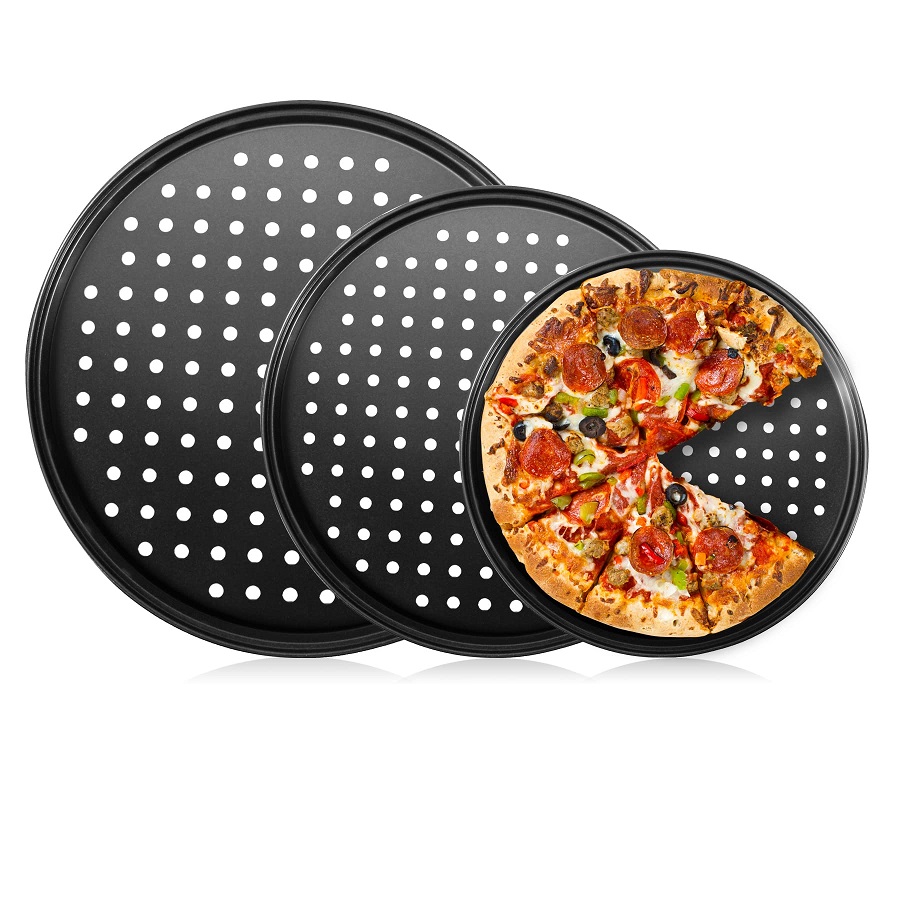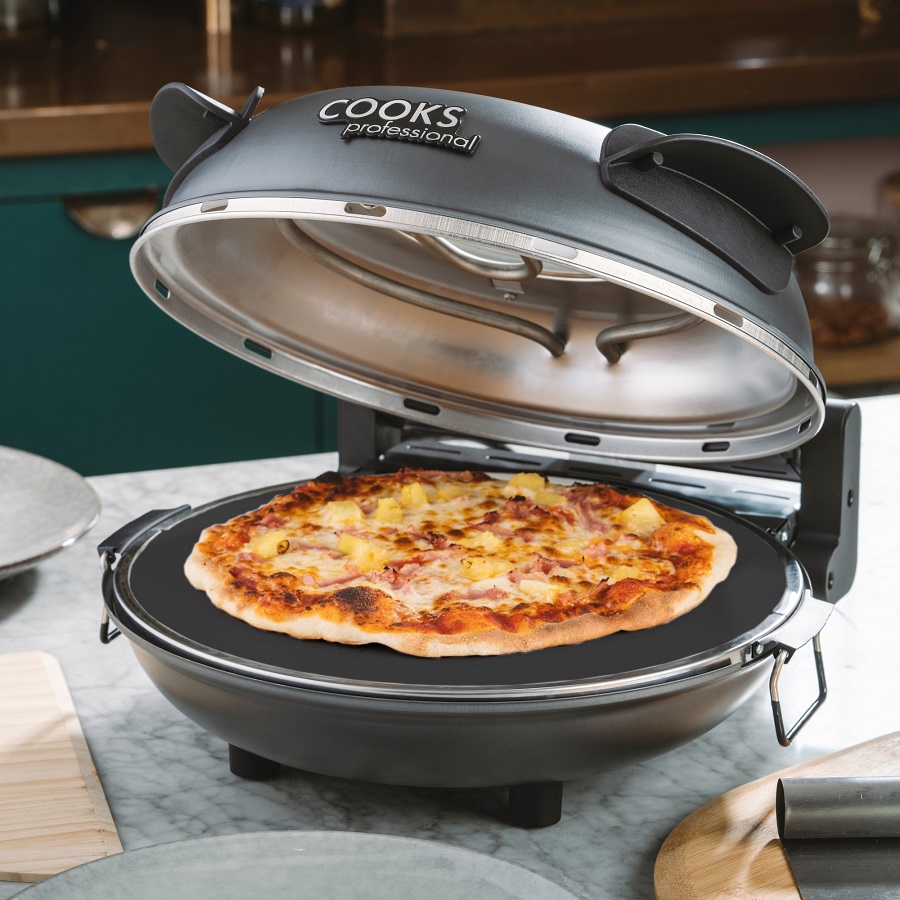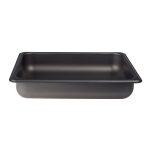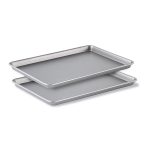Introduction
Pizza has earned its place as one of the most beloved foods around the world. Whether you prefer a classic Margherita, a pepperoni delight, or a creative vegetarian medley, your homemade pizza experience will be significantly elevated by the right baking sheet. In this ultimate guide, we will dive into everything you need to know about choosing the perfect pizza baking sheet, including materials, sizes, and expert tips to achieve that homemade pizza perfection.
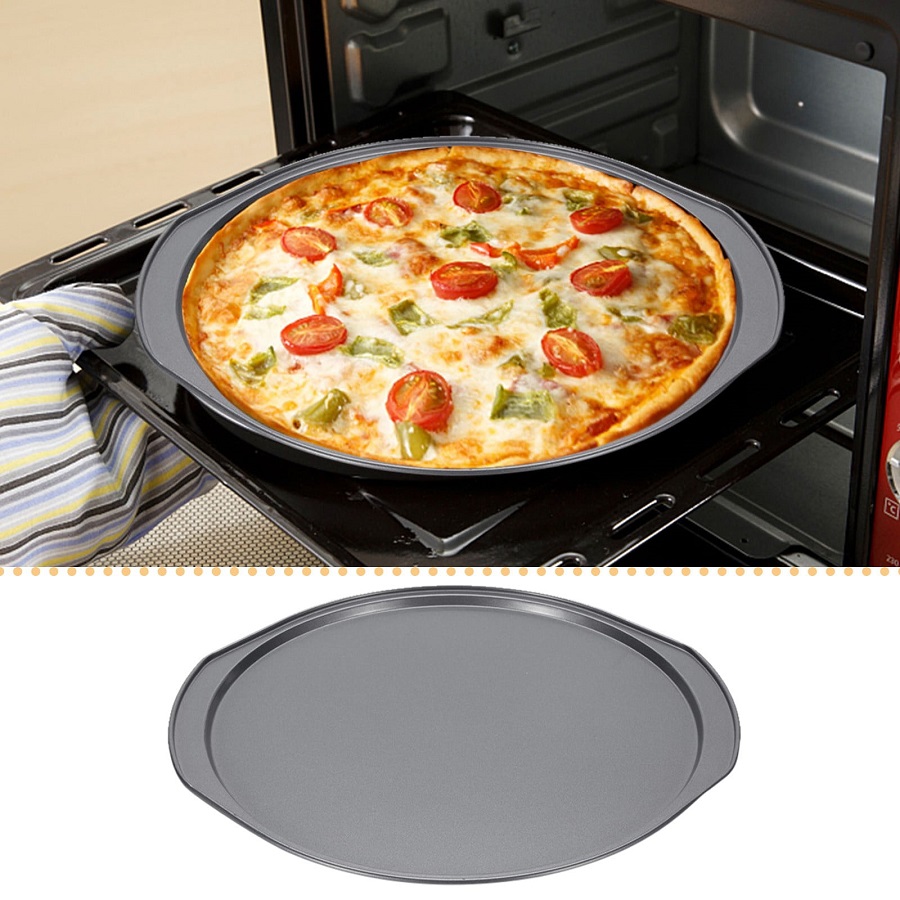 Understanding Pizza Baking Sheets
Understanding Pizza Baking Sheets
Pizza baking sheets are essential tools for achieving a crispy, golden crust while ensuring that your toppings are cooked to perfection. They come in various materials, sizes, and shapes, each offering unique benefits.
Materials
- Aluminum
Aluminum baking sheets are lightweight and heat up quickly, making them a popular choice for home cooks. They provide even heat distribution, which is perfect for achieving a crispy crust. Non-stick options are available, but they can be prone to scratches and may require more care during cleaning. - Stainless Steel
Stainless steel sheets are durable and resistant to warping, making them a long-lasting option. They do not conduct heat as quickly as aluminum, so it’s essential to preheat them for the best results. They are often easier to clean and maintain than their non-stick counterparts. - Cast Iron
Cast iron pizza pans are known for their exceptional heat retention and durability. They can create a crust that rivals that of a professional pizzeria, offering a rich, evenly browned texture. However, they require seasoning and care to prevent rusting. - Ceramic or Stone Baking Sheets
These materials are praised for their ability to absorb moisture, which helps achieve a crispy crust. They conduct heat slowly, so they can be less forgiving for those who may not monitor cooking times closely. Additionally, they tend to be heavier and more fragile than metal options. - Steel (Baking Steel)
Baking steels have gained popularity among pizza enthusiasts for their superior heat conduction. They are heavier than traditional baking sheets and can absorb and radiate heat more effectively, allowing for a pizza crust that rivals that of a brick oven.
Sizes
When it comes to choosing the right size for your pizza baking sheet, consider the following dimensions that cater to various cooking preferences:
- Personal Size (10-12 inches)
Perfect for individual servings or smaller pizzas, personal-sized sheets allow for quicker cooking times and are ideal for experimentation. - Medium Size (14-16 inches)
This size is versatile and accommodates a variety of recipes. Medium sheets are excellent for family-sized pizzas, perfect for gatherings and casual dinners. - Large Size (18-20 inches or more)
If you often entertain guests or have a large family, a large baking sheet can allow you to create a substantial pizza that satisfies everyone. Additionally, larger sizes can be beneficial for accommodating creative toppings and combinations.
Shapes
While the traditional round pizza is most common, don’t forget that baking sheets come in various shapes, too. Rectangular sheets are fantastic for making thicker or square pizzas, which can be easier for slicing and serving at gatherings.
Tips for Homemade Pizza Perfection
Once you’ve selected the perfect pizza baking sheet, consider these tips to achieve homemade pizza perfection:
Preheat Your Oven
Always preheat your oven to the highest temperature possible (usually around 475-500°F). If you’re using a baking steel or stone, give it extra time to heat up to ensure maximum crispness in your crust.
Use Parchment Paper
If you’re worried about sticking, consider using parchment paper on your baking sheet. This not only aids with clean-up but also can help your pizza slide off easily when removing it from the oven.
Allow the Dough to Come to Room Temperature
Working with cold pizza dough can lead to difficulties in shaping and stretching. Allow your dough to sit at room temperature for about 30 minutes before attempting to roll it out.
Experiment with Toppings
Don’t be afraid to get creative with toppings! Experiment with different cheeses, sauces, and vegetables. Just be mindful not to overload your pizza; too many toppings can lead to a soggy crust.
Rotate Your Pizza
For an evenly baked pizza, rotate it halfway through cooking. This practice ensures that all sides receive the same amount of heat, preventing one side from burning while the other remains undercooked.
Invest in a Pizza Peel
If you plan to make pizza regularly, consider getting a pizza peel. This tool makes transferring your pizza in and out of the oven much easier, reducing the chances of burns and mishaps.
The Role of the Baking Surface
Heat Transfer
The fundamental reason the choice of baking sheet matters is the influence it has on heat transfer. Different materials conduct heat at different rates, which can determine how well the crust cooks and the overall texture of the pizza. When dough meets heat, it transforms, and the way heat is delivered can make or break your dish.
Retention of Heat
A good baking surface absorbs heat and retains it, allowing for even cooking. Materials like stone, steel, and ceramic offer distinct advantages in this respect. Their ability to maintain temperature can create a perfectly crispy crust while ensuring that toppings are cooked just right.
Types of Pizza Baking Sheets
A. Steel Baking Sheets
Steel baking sheets, particularly those made from carbon steel, are favored for their incredible heat retention and even heat distribution. When heated, steel can reach high temperatures, which are essential for achieving that coveted pizzeria-style crust.
Flavor and Texture Impact:
- Crispier Crust: Steel baking sheets can absorb moisture from the dough, leading to a beautifully crisp crust while maintaining tenderness inside.
- Fast Cooking: As steel heats up quickly, pizzas can cook in just a few minutes, preventing sogginess and enhancing texture.
B. Aluminum Baking Sheets
Aluminum sheets are lightweight and heat up quickly, making them popular among home cooks. While they may not retain heat as efficiently as steel or stone, they are durable and often less expensive.
Flavor and Texture Impact:
- Even Baking: Aluminum provides a relatively even baking surface, allowing for a good overall cook. However, pizzas might not reach the crispiness that steel offers.
- Less Versatile: They may require adjusting baking times and temperatures compared to steel or stone, which can affect the texture of the crust.
C. Cast Iron
When you think of cast iron, you might picture a skillet, but there are cast iron pizza pans designed for oven use. These pans excel at retaining heat and delivering a unique flavor profile due to the seasoned surface.
Flavor and Texture Impact:
- Deep Flavor: The seasoning on cast iron can add a slightly smoky flavor, enhancing the overall taste profile of the pizza.
- Thick Crust: Cast iron pans create nice browning, making it an ideal choice for thicker crusts that need ample heat retention to cook through.
D. Stone Baking Sheets
Pizza stones, typically made from ceramic or cordierite, are a favorite among enthusiasts for replicating that authentic brick oven experience. Their ability to absorb moisture makes them a great option for achieving crispy crusts.
Flavor and Texture Impact:
- Authentic Flavor: The high heat retention associated with stone baking helps mimic traditional pizza ovens, allowing for the development of unique flavors due to the direct and even heat.
- Airflow: A pizza stone allows for air circulation beneath the pizza, which helps in achieving that all-important crispy crust without burning.
E. Ceramic Baking Sheets
Ceramic options provide an aesthetic appeal alongside functionality. They heat uniformly and hold temperature well, similar to stone but often come with decorative designs.
Flavor and Texture Impact:
- Even Cook: Ceramic surfaces can lead to even cooking, mimicking the benefits of a pizza stone.
- Versatile Use: The ability to go from oven to table makes ceramic sheets excellent for serving, and their ability to hold heat can keep your pizza warm longer.
Conclusion
Choosing the perfect pizza baking sheet is an essential step toward achieving homemade pizza perfection. By considering materials, sizes, and expert tips, you can elevate your pizza-making game. Whether you’re a casual cook or a passionate pizza enthusiast, the right tools and techniques will help you create delicious, golden crusts adorned with your favorite toppings. So gather your ingredients, heat up your oven, and let your creativity shine as you embark on your homemade pizza journey!
